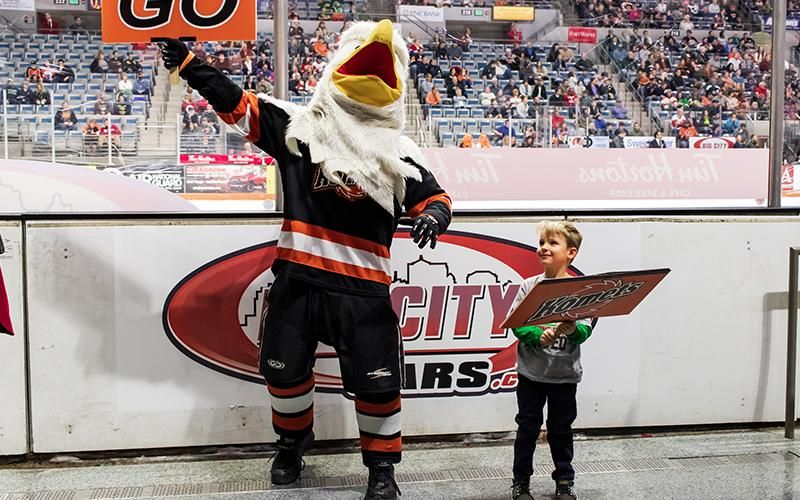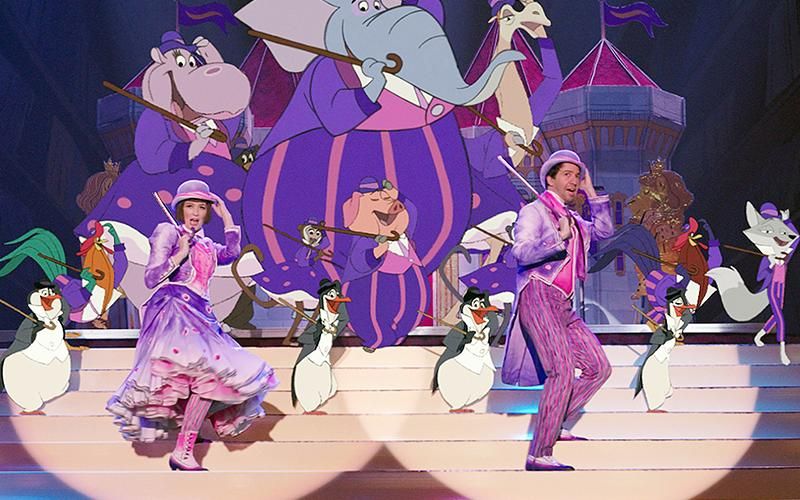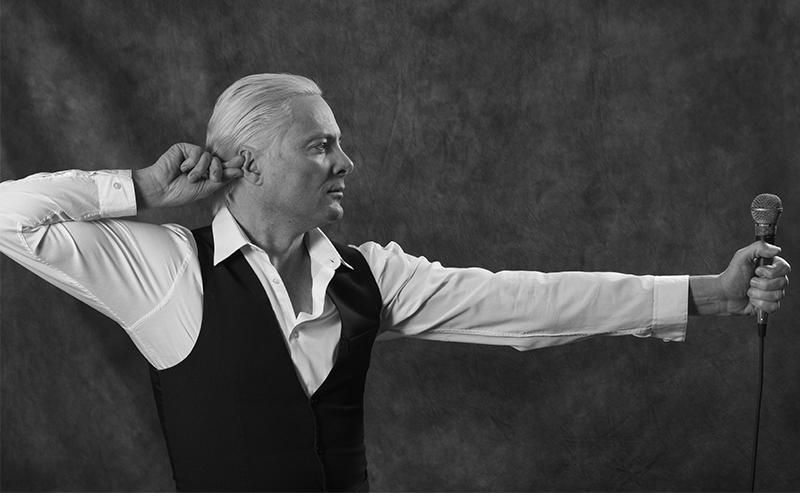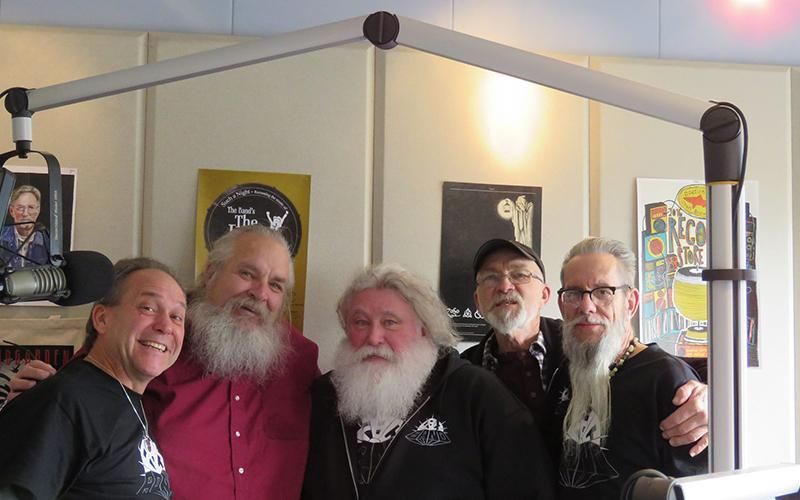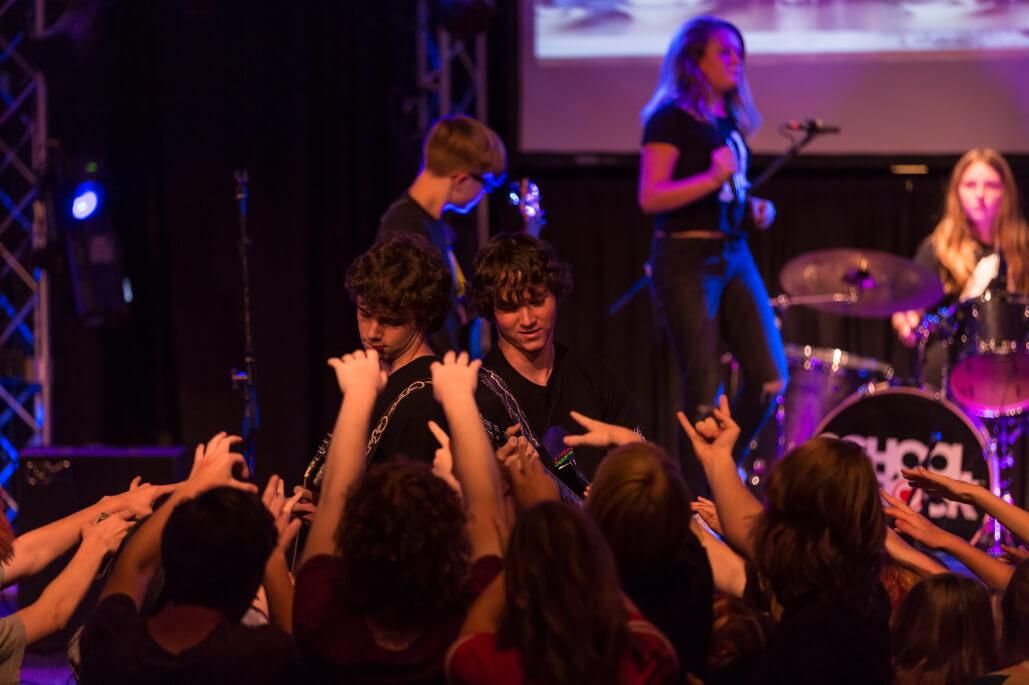Arguably, the most exciting cold-weather sports spectacle in Fort Wayne doesn’t happen on the hardwood. It’s nearly impossible for any other sport to match the pure adrenaline infusion of hockey, and best of all, you don’t have to be a hockey fan to fall in love with the experience of hockey night.
I should know. I wasn’t anything close to a hockey fan when I got caught up in the hysteria that swept the city during the Komets’ championship run in the original International Hockey League in 1993.
But it took only one lightning-paced game in the thunderous confines of the Coliseum to convince me that a Komets game was the hottest sports ticket in town and keep me coming back again and again. By about my third game, I owned my own Komets jersey and yelled at the refs as loudly as anyone else in the Coliseum. The thrill of hockey night is infectious to the extreme.
The deep history of Komet Hockey
There aren’t many cities that can boast the kind of hockey history that Fort Wayne can. Not only have the Komets been playing in town for two thirds of a century, but they are one of the oldest continuously playing teams in North America. Only seven professional hockey teams — six of them the original NHL teams — have been playing in the same city under the same name for longer than the Komets have been playing in Fort Wayne.
And the Komets haven’t just been playing; they’ve been winning. They’ve brought home nine league championships and made too many playoff appearances to count. Komet hockey has always been hockey of serious caliber that rivals anything you’ll see anywhere in North America.
No matter who wins, though, hockey night is as irresistibly fun as any other pro sports experience. Theatrical player introductions, dazzling light shows, crowd-inspiring music, a wacky mascot, food that goes light years beyond the hot dogs and nachos of old, and the silliest of entertainment during intermissions — a Komets game has it all.
But let’s not forget the fundamental excitement of the game. During a slapshot on goal, a hockey puck can travel well over 100 miles per hour, and the fastest skaters can reach speeds approaching 30 miles per hour. Play rarely stops for long, usually because of a rule violation. And hockey is the only sport that essentially puts players in jail for breaking the rules. How awesome is that?
No, you don’t have to be a hockey fan to love a Komets game, but it doesn’t hurt to head to the Coliseum with a bit of basic knowledge about what you’re going to see. Here’s a primer on some of the game’s features and rules:
The Game
A regulation hockey game consists of three 20-minute periods with a short intermission between. If the game is tied at the end of three regulation periods (which is not at all uncommon), the game heads to an overtime period.
The Teams
Each hockey team puts six players on the ice at a time. Typically, the lineup on the ice consists of three forwards — a center and left and right wings — who focus on attacking the other team’s goal. A pair of defensemen usually hang back and guard against anything bad happening at their own goal, and a goalie lives in the area in front of the goal net (called “the crease”) and tries to stop the pucks that are fired at him at the before-mentioned 100 miles per hour.
Offside
One of the most common play stoppages comes after a violation of the offside rule: An attacking player cannot cross the blue line into the opponent’s zone before the puck crosses the line. Also, a player cannot pass the puck across the blue line to a teammate who is already in that zone.
Icing
This rule is arcane outside of hockey, but easy to understand. Icing happens when a player launches the puck across both the center red line and the opponent’s goal line without the puck being touched by one of his teammates. When this occurs, the puck is brought back for a faceoff in the offending team’s zone.
Penalties
Players are penalized when they break a rule other than minor puck-movement rules. Penalties are often doled out for excessively violent play — elbowing, tripping, hooking or spearing with the stick, raising the stick above the shoulders, holding another player or his stick, fighting, etc. When he’s hit with a penalty, a player is sent to the penalty box for two or five minutes, depending on the severity of the infraction.
Power Plays
When players from a team are in the penalty box, that team has to play short-handed, giving the other team a one- or two-player advantage on the ice (assuming that team doesn’t have anyone in the penalty box at the same time) until the penalty minutes expire. The short-handed team isn’t subject to the icing rule.
Overtime and Shootouts
If the game is tied at the end of the third regulation period, the game goes to a five-minute overtime period, with each team having just three players and a goalie on the ice.
If the score is still tied at the end of overtime, the game is decided by a shootout, one of the most nerve-wracking-yet-thrilling events in all of sports. In a shootout, three players from each team take turns, one at a time, taking shots on a goal that’s defended only by the goalie. The team that scores the most goals in the shootout wins.
If the shootout is still tied after all the shooters have had their shots, the shootout moves to a sudden death format, and the crowd goes into a frenzy. The night’s hard-fought contest will end the first time one of the goalies fails to stop one of those 100-mile-per-hour pucks.
If this happens at your first Komets game, congratulations! You’ve just experienced the ultimate in hockey night excitement. And I’ll bet you’ll be back.
